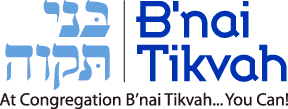A casual observer of a High Holy Day service (indeed, of any morning service) would note that Kaddish in one form or another is recited multiple times—7 or more. Without a clear explanation, the observer could be forgiven for feeling that this constitutes unnecessary repetition; and considering how long our services are on the High Holy Days, those last couple Kaddishes could feel like nails scraping a blackboard.
So what gives with all the Kaddishes?
First, we need to understand that Kaddish is arguably the single most important prayer in the siddur. The center line “yehey smey rabbah mevorach,” “May G-d’s great name be praised forever and ever” summarizes the entire thrust of the prayer service.
Second, this point is underscored for us in different contexts, with different emphases. So the Kaddishes play a nearly musical role in the service. Think about Mussorgsky’s Pictures at an Exhibition, with an intermezzo returning around 10 times, or Beethoven’s Fifth (dah dah dah daaaaah), with that same motif repeated endlessly.
Keeping it simple, the Kaddish is often used as a kind of punctuation point in the service, marking transitions from one variation of prayer to another.
- When we shift from morning blessings (Birkot Hashachar) to passages of song (Pesukei d’Zimra), we recite a mourner’s Kaddish. Birkot Hashachar grounds us in who we are. Pesukei d’Zimra are passages of praise that we should only do when we are firm in our sense of self.
- When we shift from passages of song (Pesukei d’Zimra) to the core of the morning service (Barchu, etc.) we recite a half Kaddish. Here, we shift from endless praises of G-d in general to prayers that reflect G-d’s interplay with the world and with the Jewish people.
- When we shift from morning service to Torah service we recite a full Kaddish. This marks the shift from prayer to study.
- When we finish the main torah reading, and shift to the maftir aliyah and haftorah, we recite a half Kaddish. In doing so, we distinguish between the readings which are Torah-centric to the readings which link Torah to the Prophets and beyond.
- When we put the Torah away, and get ready for the musaf Amidah, we recite a half Kaddish. Here again we shift from study back to prayer.
- When we complete the Musaf Amidah we recite a full Kaddish. The full Kaddish contains a line asking G-d to accept our prayer—and the Amidah is “our prayer” par excellence. There is a full Kaddish at some point after every Amidah.
- After Aleynu (and sometimes after special additional prayers, like the prayer for the season of awe) a mourner’s Kaddish is recited. This marks the beginning of our transition from prayer ceremony back to normal life.
Using Kaddish as a kind of punctuation allows us to shift easily from one aspect of worship to another. Why is this helpful? Because if you think of a prayer service as a 4 hour marathon, it’s easy to burn out. Far better to take the service in measured bits, each reflecting a different mode of searching for the Presence of G-d.
